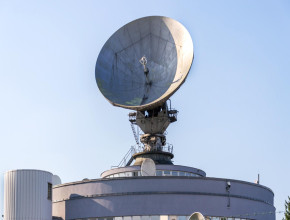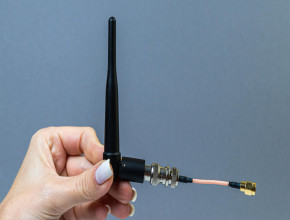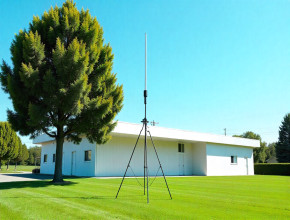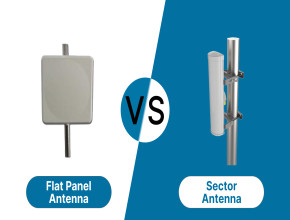
Today, dual-band Wi-Fi antennas enable fast, efficient, and seamless communication in modern networking. This device helps users enhance their connectivity by supporting multiple devices. The dual-band Wi-Fi antenna reduces interference and ensures trustworthy internet performance on both the 2.4 GHz and 5 GHz bands. But that’s not all about dual-band Wi-Fi antennas. If you want to learn more about dual-band Wi-Fi antennas, this guide will explain everything you need to know about them. Here, you'll discover the basics of dual-band Wi-Fi antennas, how they work, and other important details. Let’s get started!
What is a Dual-band Wi-Fi antenna?
A dual-band Wi-Fi antenna operates in two frequency bands: 2.4 GHz and 5 GHz. You can connect this equipment to your older and newer Wi-Fi devices. This helps you gain flexibility and access better network performance. Both bands of antennas offer their own unique functionalities. The 2.4 GHz band helps provide wider coverage. While the 5 GHz band offers faster speeds with less interference.
Both bands of dual WiFi antenna work together and offer stable wireless connectivity in homes and offices with multiple devices. Panel antennas are commonly used in routers, access points, and range extenders to enhance wireless coverage and improve internet experience across different environments.
How a Dual-Band Wi-Fi Antenna Works?
The working of a dual-band Wi-Fi antenna can be a bit complicated. But here we are making everything simple with the help of these points:
Two Frequency Bands
As mentioned earlier, this dual Wifi antenna works on two frequencies: 2.4 GHz and 5 GHz. Its first band covers a wider area and can pass through walls. Industries use parabolic dish antennas for long-range applications. The second band increases the signal speed and is suitable for use over short distances.
Better Performance
The dual-band Wi-Fi antenna avoids network congestion. It offers better performance even in areas where there is heavy traffic. When one band is busy or slow, devices like rubber duck antenna can easily switch to the other band automatically. This is beneficial for a smooth and quick internet experience. People install this antenna to increase their productivity and work with constant connectivity.
Supports More Devices
Strong connectivity is a must for working online in homes and offices. Thankfully, an omnidirectional antenna allows multiple devices to be connected without slowing down the network. This antenna supports more devices and makes gaming, streaming, and video calls immediate and efficient.
Stable and Reliable Signal
Dual-band antennas interfere with signals that come from other electronics, such as microwaves and cordless phones. Wireless devices like an outdoor omnidirectional antenna provide a more stable connection for your everyday internet needs.
Applications of Dual-Band Wi-Fi Antennas
Dual-band Wi-Fi antennas are used in many applications for consistent and seamless connections. Individuals and industries use this device for better wireless connections. Let's talk about the applications where dual-band Wi-Fi antennas play a vital role:
Home Networking
Dual-band Wi-Fi antennas are important in home networks. You can install this device in your home to increase internet speed and reduce congestion. That boosts internet speed and coverage and reduces congestion. When you use this rubber duck antenna for your home devices, you can adjust its capacity based on your activity. If you are going to download a large amount of files, you can set a directional antenna to a higher band. Overall, devices like dual-band WiFi antennas give better opportunities to those who want to establish a strong home networking system.
Business and Industrial Setups
For industrial establishments, Wi-Fi antennas play a vital role in wireless connections. It offers stable and high-performance internet connections to power operations ranging from internal communications to customer-facing services. You can use this device in your offices and factories. It reduces interference, increases network capacity and provides better coverage for devices and systems.
IoT and M2M Communications
This device is ideal for smart devices and interconnected systems. It creates long-range and stable connections with the two bands it comes with. You can expect high data rates and real-time data transfer without any delay. IoT and M2M communication sectors use these devices for smooth communication between various smart devices. This provides efficient data exchange and minimal signal interruptions in homes, factories, healthcare, and other places.
Wi-Fi Hotspots
Wi-Fi hotspots, where many people connect multiple devices at once, require something to ensure strong wireless communication. By using a dual-band Wi-Fi antenna, you can reduce interference and congestion. And every connected user can get a stable Internet connection for reliable work. This device provides faster, more dependable connections even in crowded environments such as coffee shops, airports, or libraries.
Extended Coverage for Rural Areas
Dual-band antennas are very helpful in rural areas where the internet connection is not good. You can connect your traditional wired connection to dual Wi-Fi antennas to get a high-speed connection. Stable Internet access helps communities improve communications, education, and commercial applications. You can use dual Wi-Fi antennas in underprivileged and rural areas to ensure that you get a reliable and stable internet connection and can perform various tasks efficiently.
Conclusion
Today, a dual-band Wi-Fi antenna is designed to support both 2.4 GHz and 5 GHz signals. This gives the capability to receive high-speed internet connections for both long and short distances. You can use this antenna for your personal or office use. With the help of a range of Wi-Fi band antennas, you can easily cater to a variety of devices and applications. This ensures optimal network efficiency and performance.
If you are planning to buy a dual Wi-Fi antenna, you need to consider many factors to determine the right solution. You need to choose a solution that meets your specific requirements. Check whether you are using it for indoor or outdoor purposes, short or long distances, or looking for installation, gain, and other important features. Most importantly, also consider the range of prices in which you want to adopt your antenna solution. We hope this overview of dual-band Wi-Fi antennas helps you to get details about this antenna.





